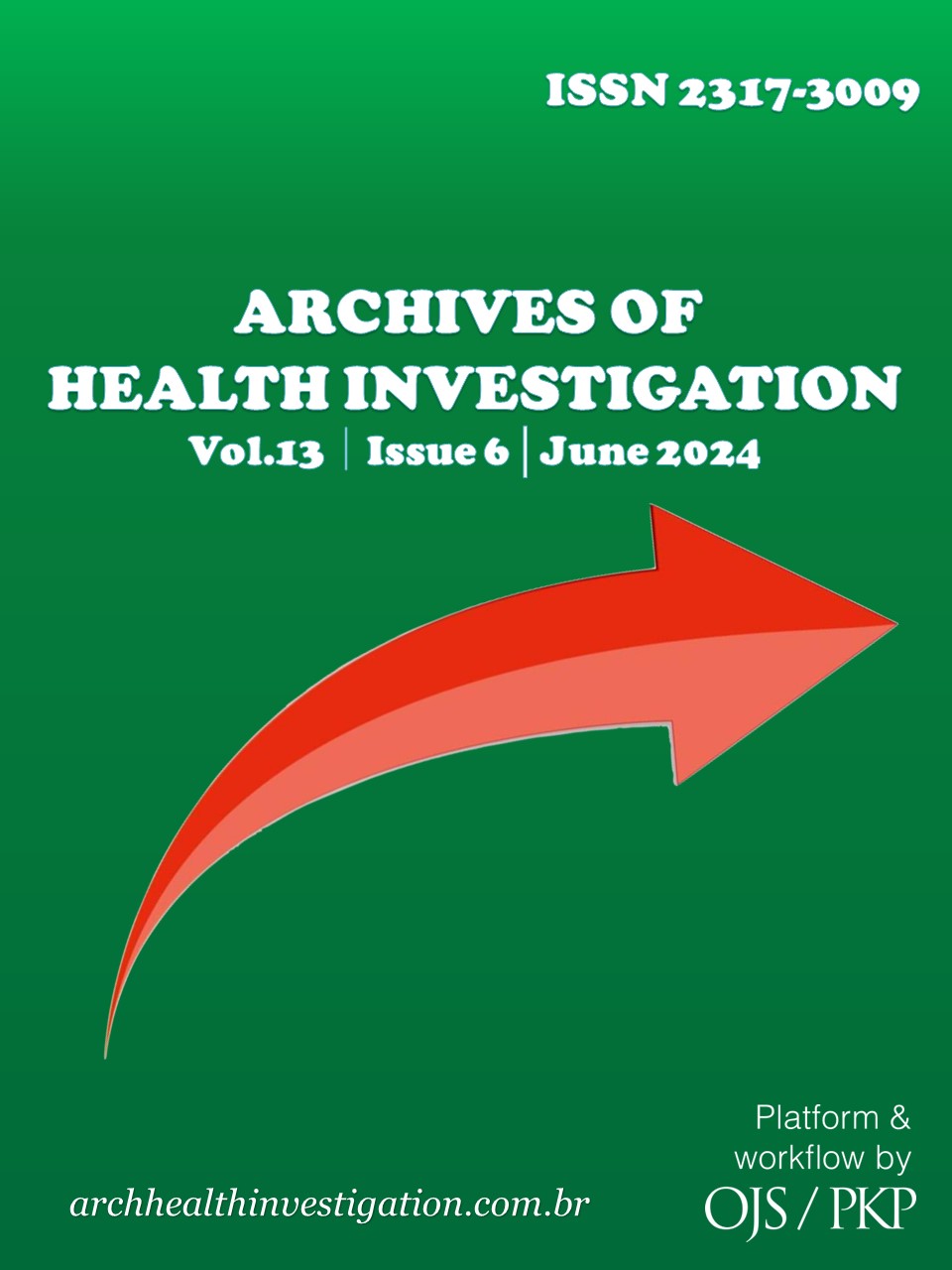Placa Oclusal Confeccionada no Fluxo Digital como Auxiliar no Tratamento de Disfunção Temporomandibular – Relato de Caso
DOI:
https://doi.org/10.21270/archi.v13i6.6398Palavras-chave:
Placas Oclusais, Transtornos da Articulação Temporomandibular, Desenho Assistido por Computador, Relato de CasoResumo
O uso de Placas Oclusais como coadjuvantes no tratamento de pacientes com Disfunções Temporomandibulares é consolidado na literatura e reafirmado no dia a dia clínico. Por muitos anos, a confecção clínica e laboratorial pelo método analógico obteve resultados clínicos eficientes. Com o advento do fluxo de trabalho digital em Odontologia, com a redução do desconforto dos pacientes nas etapas de moldagem e mais rapidez nas etapas laboratoriais, surgiu o questionamento sobre a aplicabilidade na confecção das placas oclusais. Este trabalho apresenta o relato de um caso clínico com as etapas da confecção de uma placa oclusal desenvolvido pelo fluxo de trabalho digital. Para isto foi selecionado um paciente que apresentava sinais e sintomas de disfunção temporomandibular na Clínica Integrada da Faculdade de Odontologia da Universidade Federal de Alfenas. Foram realizadas as etapas clínicas e laboratoriais documentadas em registros fotográficos do passo a passo clínico. Os resultados obtidos permitiram observar um número muito menor de sessões e menor ajuste oclusal da placa.
Downloads
Referências
International Classification of Orofacial Pain, 1st edition (ICOP). Cephalalgia. 2020;40(2):129-221.
Schiffman E, Ohrbach R, Truelove E, Look J, Anderson G, Goulet JP et al. Diagnostic Criteria for Temporomandibular Disorders (DC/TMD) for Clinical and Research Applications: recommendations of the International RDC/TMD Consortium Network* and Orofacial Pain Special Interest Group†. J Oral Facial Pain Headache. 2014;28(1):6-27.
Chan NHY, Ip CK, Li DTS, Leung YY. Diagnosis and Treatment of Myogenous Temporomandibular Disorders: A Clinical Update. Diagnostics (Basel). 2022;12(12):2914.
Zhang ZP, Wang CC, Song LX, Liu L, Wang MQ, Liu JG. [Analysis of the clinical manifestations of 3 425 patients with orofacial pain of temporomandibular disorders]. Zhonghua Kou Qiang Yi Xue Za Zhi. 2021;56(12):1244-1252.
Patzelt SBM, Krügel M, Wesemann C, Pieralli S, Nold J, Spies BC, Vach K, Kohal RJ. In Vitro Time Efficiency, Fit, and Wear of Conventionally- versus Digitally-Fabricated Occlusal Splints. Materials (Basel). 2022;15(3):1085.
Zhang SH, He KX, Lin CJ, Liu XD, Wu L, Chen J, Rausch-Fan X. Efficacy of occlusal splints in the treatment of temporomandibular disorders: a systematic review of randomized controlled trials. Acta Odontol Scand. 2020;78(8):580-89.
Albagieh H, Alomran I, Binakresh A, Alhatarisha N, Almeteb M, Khalaf Y, Alqublan A, Alqahatany M. Occlusal splints-types and effectiveness in temporomandibular disorder management. Saudi Dent J. 2023;35(1):70-9.
Denardin ACS, do Nascimento LP, Valesan LF, Da Cas CD, Pauletto P, Garanhani RR, Januzzi E, Hilgert LA, de Souza BDM. Disocclusion guides in occlusal splints on temporomandibular disorders and sleep bruxism: a systematic review. Oral Surg Oral Med Oral Pathol Oral Radiol. 2023;135(1):51-64.
Berli C, Thieringer FM, Sharma N, Müller JA, Dedem P, Fischer J, Rohr N. Comparing the mechanical properties of pressed, milled, and 3D-printed resins for occlusal devices. J Prosthet Dent. 2020;124(6):780-86.
Grymak A, Waddell JN, Aarts JM, Ma S, Choi JJE. Evaluation of wear behaviour of various occlusal splint materials and manufacturing processes. J Mech Behav Biomed Mater. 2022;126:105053.
Sun X, Feng Y, Jiao Y, Liu W. Fully digital workflow for the fabrication of occlusal stabilization splints based on individual mandibular movement. J Dent. 2024;141:104826.
Hardy RS, Bonsor SJ. The efficacy of occlusal splints in the treatment of bruxism: A systematic review. J Dent. 2021;108:103621.
Algabri R, Alqutaibi AY, Elkadem AHE, Maher EA. Patient’s satisfaction and muscles activity after management of temporomandibular disorders patients using computer-aided design/computer-aided manufacturing versus conventional occlusal splints (randomized clinical trial). Int Dent Med J Adv Res. 2017;3:1-8.
Alqutaibi AY, Algabri R, Ibrahim WI, Borzangy S. Does the facebow affect the outcome of CAD/CAM occlusal splint. Randomized clinical trial. Saudi Dent J. 2021;33(7):628-34.
Almeida MVC, Teodoro MKR, Veloso NA. IMPRESSÃO 3D E SUA APLICABILIDADE NA REABILITAÇÃO ORAL. BJSCR. 2020;33:105-
Veneza P, Lo Muzio L, De Furia C, Torsello F. Digital manufacturing of occlusal splint: From intraoral scanning to 3D printing. J Osseointegration. 2019;11:535-9.
Wesemann C, Spies BC, Schaefer D, Adali U, Beuer F, Pieralli S. Accuracy and its impact on fit of injection molded, milled and additively manufactured occlusal splints. J Mech Behav Biomed Mater. 2021;114:104179.
Nota A, Ryakhovsky AN, Bosco F, Tecco S. A full digital workflow to design and mill a splint for a patient with temporomandibular joint disorder. Appl Sci. 2021;11:372.
Berntsen C, Kleven M, Heian M, Hjortsjö C. Clinical comparison of conventional and additive manufactured stabilization splints. Acta Odontol. Scand. 2018;4:81-9.
Perea-Lowery L, Gibreel M, Vallittu PK, Lassila L. Evaluation of the mechanical properties and degree of conversion of 3D printed splint material. J Mech Behav Biomed Mater. 2021;115:10425.


